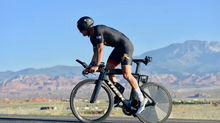Getting Sick is OK
- Jason Lentzke
- Jun 3, 2023
- 3 min read
Getting sick during a training cycle is inevitable--it's a part of life. The important thing to embrace is that performance readiness is a result of many weeks and months of layering consistent training. Missing a few days due to sickness within the season is not going to sabatoge your next event. Remember, it takes five days of inactivity before the initial effects of detraining begin to occur.

Five days is an important buffer for situations like head colds. While colds can be emotionally tough; logic and this knowledge allow us to know we have wiggle room before our adaptations and fitness from previous hard work begins to dissolve. When the body’s immune system is under attack from a virus, the capacity to make physiological gains from highly stressful training is greatly compromised. In addition, adding high load endurance training at this time is likely to increase the duration the virus and symptoms remain in your system. A Few Tips From Coach Matt Dixon: If above the neckline - keep moving: If you have the classic cold symptoms, without a fever or chest cough, you can keep moving, but avoid hard training. Under 60 minutes at a time, in ZONE 1 or under is my recommendation. Listen to what the mind and body tell you. If below the neckline - complete rest: Any symptoms of body aches, fever, chest cough, etc. then complete rest is the best route. Typically, at least 72 hours of complete rest is optimal before moving again and only if improved. Sleep and rest accelerate recuperation: The body likes to ‘regress to the mean.' Rest, sleep and lower stress environments will support you on the journey back to full health. Embrace sleep and aim to maximize the opportunity to get as much as possible. Hydrate the immune system: Plenty of fluids, including teas, soups, and water are optimal supporters of cellular health and the immune system. Cold medicines are OK, but not to mask logic: We have to get through the work day, and there is nothing wrong with taking (legal) supplements to help diminish the effects of the cold. Just don’t let the diminished symptoms lead you to make ineffective decisions on training. Big picture: Recently, Tim Reed won the IRONMAN 70.3 World Championships following a nasty cold about 10 days before the race. Credit to Tim that he didn’t let the cold play into his headspace on race day. You shouldn't either. Forced rest can sometimes help eager athletes and their coaches. Remember that performance isn’t built on hitting every single prescribed session. It is built on consistent training and arriving at race day healthy, fresh and eager to embrace the effort of the day. Re-entry to training: Once you feel the symptoms diminish, you can begin to ramp back into training. The first day is purely about moving blood, so short and low stress. The second day should be endurance focused, with a normal duration of training. Do this with a willingness to back off if you are not feeling good. Finally, on the third day, you can resume regular training at typical intervals. Note: IF you feel worse following any of the days, then add another low stress or endurance day into the ramp back before resuming intervals. Don’t let it be a problem: If a cold lingers much longer than is typical or you begin getting colds frequently (more than two per year), then it is worth reflecting on your training load and habits such as sleep, fueling or stress. Be proactive: staying healthy factors into everything an elite athlete does.























